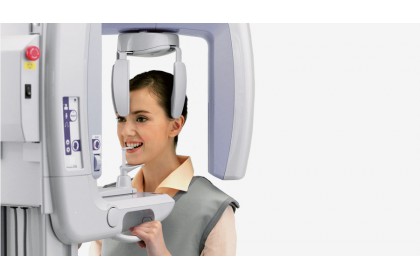An OPG (Orthopantomagram) is a panoramic scanning dental X-ray of the upper and lower jaw. It shows a two-dimensional view of a half-circle from ear to ear. Orthodontists regularly use digital OPGs to monitor and assess the health of patients’ teeth and gums. A digital OPG demonstrates the number, position, and growth of all the teeth, including the ones that have not surfaced or erupted. It may help examine the structure of the jawbone and the joint which connects the jawbone to the head, called the Temporomandibular joint or TMJ. In adults, OPG is widely used for the assessment of wisdom teeth.
Oral conditions that are diagnosed by OPGs, as follows:
- Infections & abscesses
- Hidden decay & cavities
- Gum diseases
- TMJ
- Sinuses
- Oral fractures
- Dislocated jaw
- Tumors, cysts, and other disorders
- Abnormal tooth development
- Wisdom teeth development
- Dental implant planning
What happens during a Digital OPG?
Digital OPG allows technicians or orthodontists to take images from multiple angles to create a composite panoramic image, exhibiting a fuller view of the maxilla (upper jaw) and mandible (lower jaw). The structures outside the area are blurred. At any stage of diagnosis or treatment, a digital OPG can be recommended to detect or check the progress.
What can a Digital OPG detect?
Various dental issues and conditions are diagnosed at the right time. Not opting for an OPG can result in the progression of undiagnosed oral conditions. It may end up causing severe oral health complications affecting overall health. A digital OPG offers early detection and helps in planning appropriate treatment while increasing your chances for a quick and successful recovery.
Instructions:
- No special preparation is required, only a prescription from a dentist or orthodontist.
- If you are pregnant kindly inform the technician




